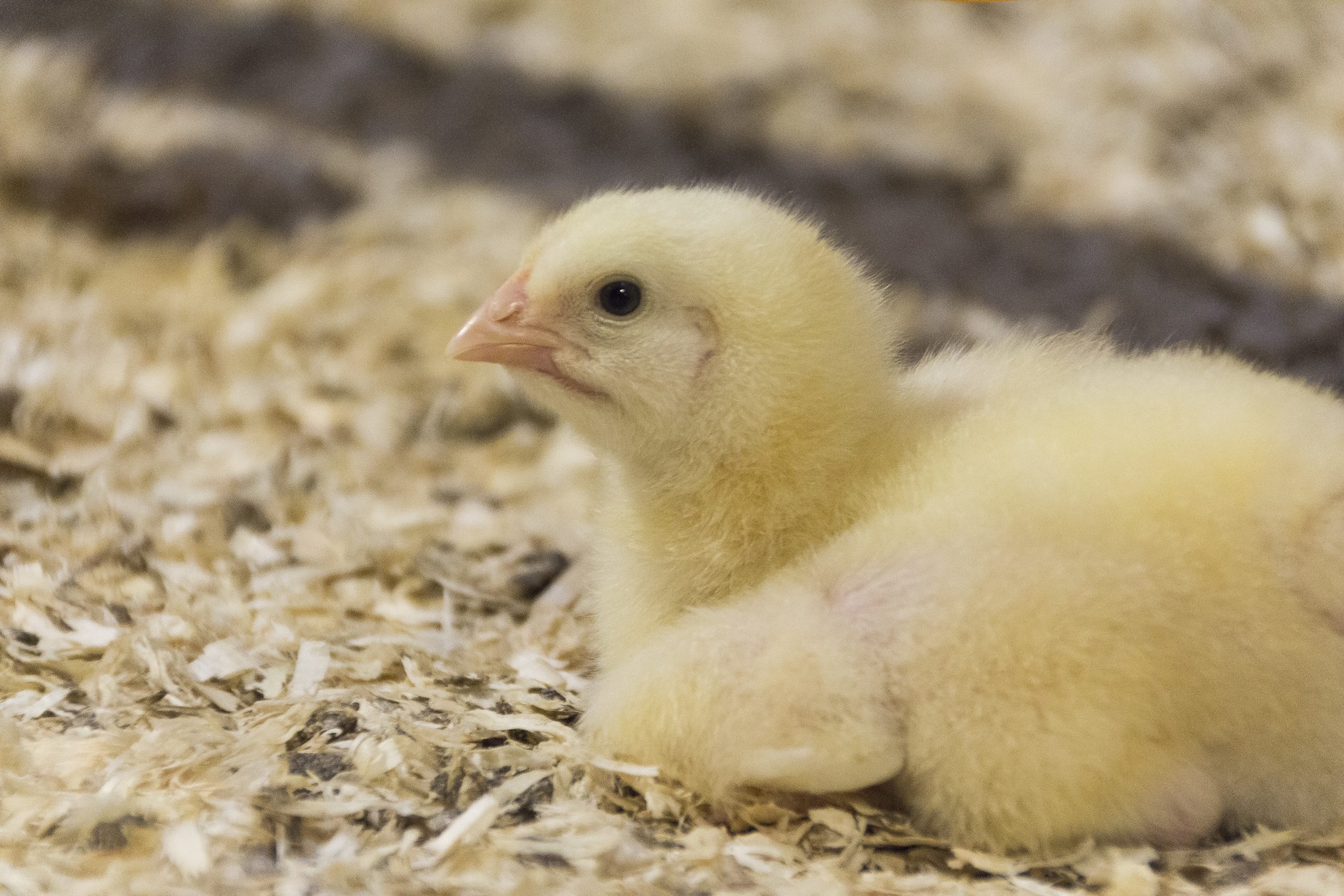Efficacy of selenium source: The genes will tell

Measuring how a feed ingredient or additive works in the animal gets more advanced every year. Gene sequencing tools can show how effective a certain product is. Here we take a look at an organic selenium and the effect in broilers.
Not all sources of selenium are created equal. Studies have shown that the form of selenium supplementation greatly affects its availability and efficacy in animals. It is generally understood that organic selenium is superior to inorganic sources. It is common practice to evaluate this in terms of poultry performance and tissue uptake. With current gene sequencing innovations it is just as easy to look at biomarkers in animals, dependent on the form of selenium fed. The effect they have on gene expression in turn influences the production of specific selenoproteins, which have antioxidant functions. Screening of the complete selenogenome, in different tissues of broiler chickens, revealed that pure organic selenium (OH-SeMet) stimulates the expression of selenoproteins both at gene and protein levels. In particular, the expression of genes related to antioxidant function and maintenance of optimal cell selenium status was increased.
The importance of selenium in poultry
Since selenium (Se) is essential for life, it follows that any deficiency will have a negative effect on the health and performance of animals. Many of these issues relate to a decline in antioxidant defences, due to a reduced expression of antioxidant selenoproteins. For example, areas of poultry production affected include:
- Redox mechanisms
- Immunity
- Thyroid function
- Fertility
- Hatchability
- Egg production
- Egg quality
- Meat quality
Selenomethionine (SeMet) is incorporated into proteins and stored in deposition tissues such as muscle. This forms a reserve of selenium, which can be metabolised into selenocysteine (SeCys) for the synthesis of selenoproteins when it is required, for example under stress conditions. This is one of the reasons why supplementation with OH-SeMet helps to maintain optimal performances even under challenging conditions. SeCys is the biologically active form of selenium and is known as the 21st amino acid. It is the only amino acid, containing an essential dietary micronutrient: selenium. Animals need to consume enough selenium to ensure sufficient de novo SeCys can be synthesised – in order to meet the requirements for all the selenoproteins. In animals, 26 SeCys containing selenoproteins have been identified, all having essential functions, several of which directly detoxify oxidants. In chicken tissues selenium availability and stress are the main drivers for selenoprotein expression.
Gene expression
Selenocysteine incorporation into selenoproteins is under the control of the genetic code, like any other protein. However, several specificities were discovered at the end of the last century, regarding the selenoprotein translation machinery. In all kingdoms of life UGA is both a terminal codon and a SeCys codon. The synthesis of selenoproteins requires SeCys to be inserted into the primary protein structure during translation. Its incorporation at UGA codons requires SeCys specific tRNA as well as other specific factors and proteins. These discoveries bought about the identification of novel selenoprotein genes, creating a better understanding of the function of most selenoproteins. Traditionally studies to assess selenium requirements used inorganic (mineral) forms of selenium. They focused on the levels that maximized enzymatic activities, such as glutathione peroxidase – or total selenium levels. However, organic selenium is known to significantly improve the selenium status of animals, when compared to inorganic forms. And whilst important, glutathione peroxidases only represent four of the selenoproteins found in animals (26 present in chickens). In order to assess efficacy a broader range of biomarkers need to be employed. Gene expression of all selenoproteins was analysed in different tissues. Values at different times, selenoprotein quantification and activities were also recorded.
Results from broiler trial
Nowadays measuring gene expression is a cheap and routine procedure. It therefore makes sense to take advantage of this technology. The genetic control of selenoprotein expression can be used to assess different selenium sources and level can influence the expression of those genes. An experiment was carried out in broiler chickens to compare the efficacy of different Se sources. Both traditional markers and molecular tools were used to demonstrate the improved biological efficacy of OH-SeMet. In the study, broilers were fed a standard soybean basal diet from 0 to 42 days. An unsupplemented diet was used as the control (basal Se level at 0.05 mg Se/kg feed). This was compared to diets to which: selenite, selenium yeast (Se-yeast only 65% of Se present as SeMet) or OH-SeMet (Selisseo™, Adisseo); were supplemented at 0.2 mg Se/kg feed.
Form and level are important
In the study, standard biomarkers including selenium content of tissues, confirmed the following tissue hierarchy of efficacy: negative control (NC)Figure 1).
Figure 1 – Oh-SeMet significantly increased the selenium content of broiler breast muscle, compared to sodium selenite and selenium yeast (at 42 days).

Standard enzymatic activities like GPx activity, measured in the liver, also showed the increased efficacy of organic forms (Figure 2).
Figure 2 – GPx activity in the liver was improved by supplementation with OH-SeMet (at 21 days)

Expression levels of the related genes (GPx1, Gpx2 and GPx3) correlated to enzymatic activity measurements (Figure 3).
Figure 3 – mRNA expression in the liver was highest for broilers fed OH-SeMet for all genes measured, mirroring enzyme activity results (at 21 days).

This indicates that gene expression could be used to monitor the influence of different selenium sources. Further gene expression results also revealed improvements in the expression of several selenoproteins in both breast and thigh muscles. Notably several known to have antioxidant (glutathione peroxidases (GPx), methionine sulfoxide reductase B1) and anti-inflammatory functions (selenoprotein S and K). Increases were also seen in SepSecS, which is an enzyme involved in the expression of all selenoproteins. Within the different tissues, selenoprotein P gene expression was the most consistently influenced. This specific selenoprotein is a key transporter of selenium, as it contains multiple selenocysteines. By transporting selenium from liver (where it is formed) to the different body tissues, Selenoprotein P helps to maintain selenium homeostasis. Research carried out in humans indicates that selenoprotein P plasma concentration is the best marker of selenium nutritional status. Protein quantification in broilers confirmed that OH-SeMet positively influences the amount of Selenoprotein P in different tissues (Figure 4).
Figure 4 – Selenoprotein P levels were significantly higher in the liver when birds were fed OH-SeMet, compared to selenite or selenium yeast.

Thioredoxin reductase, another important antioxidant selenoprotein, was also reported to have increased activity in breast muscle when broilers were fed OH-SeMet.
Antioxidant and metabolic functions
If a bird’s antioxidant system is compromised it means they are more susceptible to stress. It is known that adequate selenium levels are needed under challenging conditions, in order to maintain performance. The results of this broiler study indicate that not only the level of selenium but also the form it is delivered in, influences the effectiveness of supplementation. It confirms that OH-SeMet is the most efficient form of selenium, when compared to selenite and Se-yeast. The advantages of this form were demonstrated in increased tissue uptake and enzyme activities. Selenoprotein P, the major selenoprotein involved in selenium homeostasis, was highly influenced by the selenium source fed. Analysing the entire set of selenoprotein genes provides great insight into the efficacy of different forms. Results revealed that OH-SeMet significantly influences gene expression of selenoproteins involved in antioxidant functions. This means that animals supplemented with this form may be better protected from the effects of stress. In addition, it showed that using gene expression is a useful validation tool for selenium sources.
Author:
Mickaël Briens, Adisseo, France











